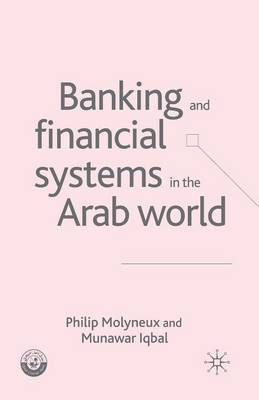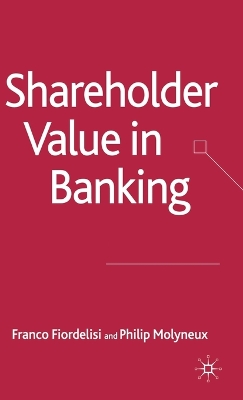Palgrave Macmillan Studies in Banking and Financial Institutions
4 total works
Banking and Financial Systems in the Arab World
by P. Molyneux and M. Iqbal
Published 1 January 2004
This book provides state-of-the art analysis of banking and financial systems in the Arab world. The early chapters of the text present an overview of Arab economies linking banking and financial sector trends in the Arab world over the last twenty years. The rest of the text examines in detail the financial systems of the major Arab countries, focusing on banking sector and capital market developments. This text will be the first to provide a rigorous analytical evaluation of banking sector developments in the Arab world.
This text explains how Islamic banking works and what it offers as an alternative model of financial intermediation. Important questions addressed include: Why Islamic banking started and where it is going? Who are the main players at present and whom it will attract in future? What are its strengths and weaknesses? Will Islamic banks survive in highly competitive and globalized financial markets? What are their prospects and potentials? How does the relative performance and efficiency of Islamic banks compare to conventional banks?
Sustainable shareholder value is a main strategic objective for financial institutions. This text provides an analytical assessment of shareholder value creation, providing a framework for analyzing theory, and presenting empirical investigations. It analyzes the importance of drivers in creating value and develops a new measure of bank efficiency.
Bank Competition, Efficiency and Liquidity Creation in Asia Pacific
by Xiaoqing (Maggie) Fu, Yongjia Lin, Dean of the College of Business Law Education and Social Sciences and Professor of Banking and Finance Philip Molyneux, Xiaoqing Fu (Maggie), N. Genetay, Y Lin, and P. Molyneux
Published 14 January 2014
Banking market integration in the Asia Pacific has greatly accelerated in recent years, in an environment of many other rapid advances in banking and finance. This has increased competition between domestic and foreign banks, and made the measurement of bank efficiency, competition, and liquidity creation a critical issue for both policy makers and bank managers.
This book investigates important policy-related issues in Asia Pacific banking. It analyses the link between competition and stability, examining the cases of fourteen Asia Pacific countries between 2003 and 2010, and goes on to discuss whether bank shareholder value is influenced by cost and profit efficiency changes over time. The authors explore the different ways in which banks in Asia-Pacific create liquidity, and whether this is linked to capital generation. This book provides valuable insight for researchers, policy makers and bank managers with an interest in financial rationalization, restructuring and consolidation.
This book investigates important policy-related issues in Asia Pacific banking. It analyses the link between competition and stability, examining the cases of fourteen Asia Pacific countries between 2003 and 2010, and goes on to discuss whether bank shareholder value is influenced by cost and profit efficiency changes over time. The authors explore the different ways in which banks in Asia-Pacific create liquidity, and whether this is linked to capital generation. This book provides valuable insight for researchers, policy makers and bank managers with an interest in financial rationalization, restructuring and consolidation.



